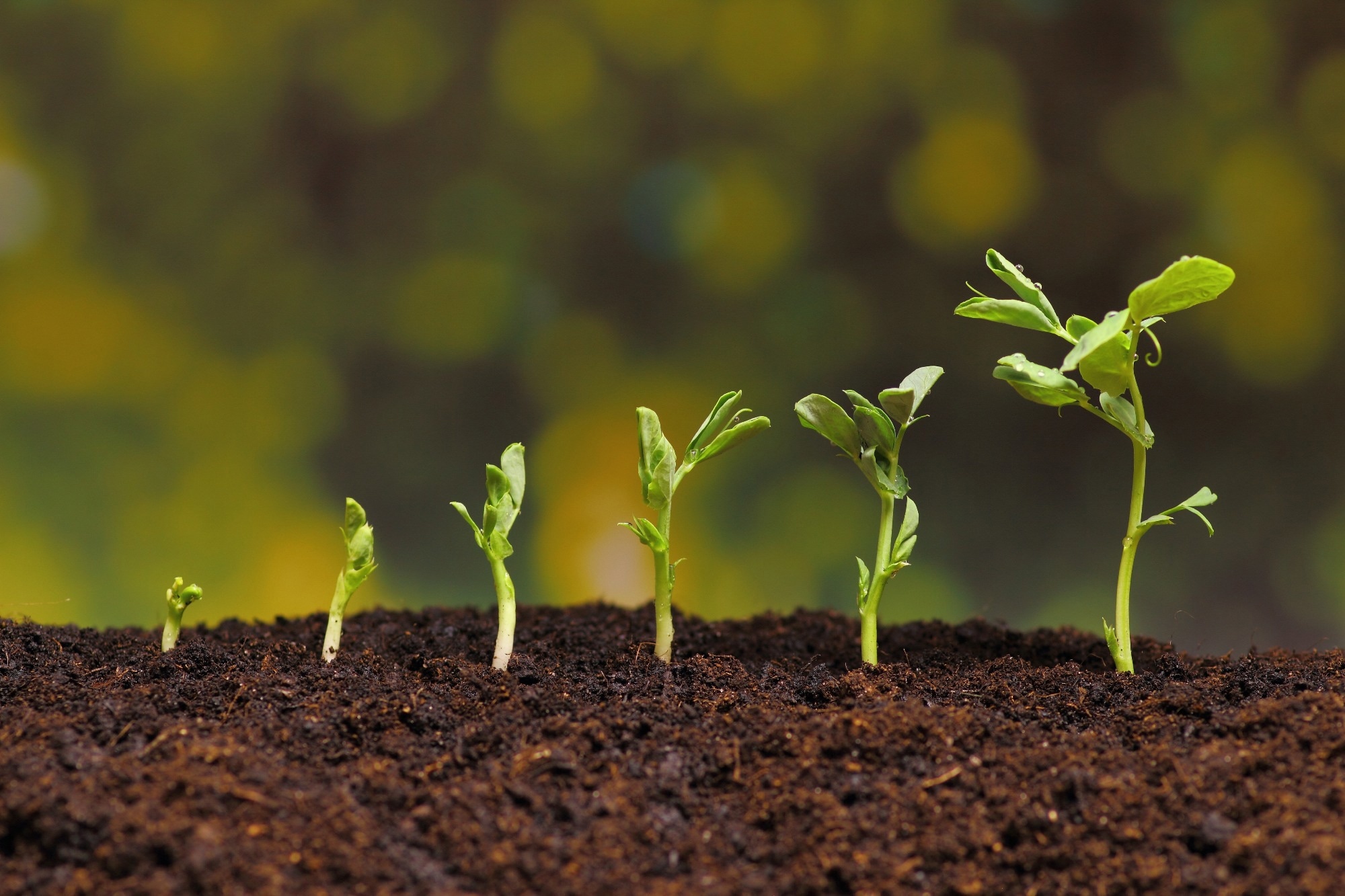Biodegradable plastics in soil appear to nourish microbes and boost pea root growth, unlike traditional plastics, offering clues to making agriculture more sustainable.

Image Credit: Bogdan Wankowicz/Shutterstock.com
A new study published in Frontiers of Agricultural Science and Engineering has compared the impacts of traditional and biodegradable microplastics on pea growth and soil health. The research shows that biodegradable plastics, particularly polyadipate/butylene terephthalate (PBAT), consistently enhance microbial activity and nutrient cycling, while traditional plastics produce mixed results.
Biodegradables Show Consistent Benefits
Microplastics in agricultural soil predominantly come from the breakdown of mulch films. Studies have shown that traditional materials like polypropylene (PP) and polyethylene (PE) can harm soil structure, disrupt nutrient dynamics, and reduce microbial diversity. These effects lead to stunted plant growth and compromise ecosystem health.
Biodegradable plastic alternatives such as PBAT and polycaprolactone (PCL) are intended to reduce environmental damage. However, there are still concerns about their potential to limit microbial diversity and enzymatic activity when they degrade in soil. Few studies had examined their long-term impacts or compared them directly to traditional plastics during key plant growth stages.
Testing Four Types of Plastic
To meet this research gap, scientists collected soil from an edible bean field and treated it with four different types of microplastics (PP, PE, PCL, and PBAT) at concentrations of 0 %, 0.1 %, and 1 % by weight. They then prepared nine different treatments in PVC pots, including a control.
Pea seeds were germinated and transplanted into the pots under controlled temperature and humidity, with standard fertilization. Plants were sampled at three stages: seedling (after 15 days), flowering (after 27 days), and maturity (after 41 days). The researchers analyzed shoots, roots, and soil for microbial biomass carbon, nitrogen, phosphorus, and DNA concentration with standard methods, such as the chloroform fumigation-potassium sulfate extraction to assess C and N biomass.
PBAT Supports Roots and Microbes
Results from the study showed that PBAT-treated soils had higher root biomass at maturity compared to all other treatments, indicating that this biodegradable material supports microbial processes and nutrient availability that benefit root development.
Traditional plastics produced less predictable results. For example, 1 % PP increased shoot biomass at the seedling stage, while 0.1 % PP improved shoot biomass at flowering. At maturity, both PP and PE enhanced shoot growth, but root gains only appeared in the highest-dose treatments.
They also found that initial microplastic levels supplied extra labile carbon for soil microorganisms, boosting organic matter decomposition and supporting plant growth. However, once these carbon sources were depleted, peas began competing with microorganisms for limited nitrogen, which constrained growth.
The authors note that these dose-dependent and material-specific effects likely reflect differences in the plastics’ physical and chemical properties, which interact differently with soil and microbial communities.
Soil Chemistry Remains Largely Stable
Soil dissolved organic carbon remained steady at flowering and maturity, possibly because microplastics bind to soil particles, slowing organic matter decomposition. Phosphorus levels dipped slightly at the seedling stage only in soils treated with 0.1 % PP, which may indicate reduced adsorption capacity in these conditions.
Across all treatments, the shoot to root biomass ratio shifted, with traditional plastics tending to favor shoot growth over roots compared to PBAT, which encouraged more balanced growth.
Next Steps for Sustainable Farming
This study offers a more nuanced understanding of how different microplastics affect plant-soil systems. Among the materials tested, PBAT was the least damaging to soil health and best for supporting root development, thanks to its biodegradable nature and positive effects on nutrient cycling.
However, longer-term field trials are needed to fully assess the ecological risks and benefits of both traditional and biodegradable microplastics in agricultural settings.
Journal Reference
Jialing W. U. et al. (2025). Traditional and biodegradable plastics improve pea (Pisum sativum) growth by promoting nutrient turnover in soil. Frontiers of Agricultural Science and Engineering, 13(1): 25626. DOI: 10.15302/J-FASE-2025626. https://journal.hep.com.cn/fase/EN/10.15302/J-FASE-2025626
Disclaimer: The views expressed here are those of the author expressed in their private capacity and do not necessarily represent the views of AZoM.com Limited T/A AZoNetwork the owner and operator of this website. This disclaimer forms part of the Terms and conditions of use of this website.